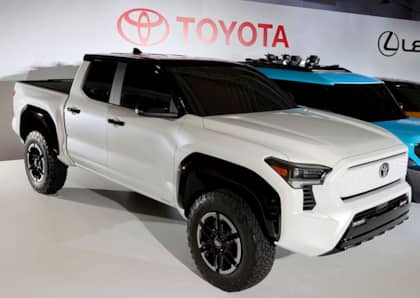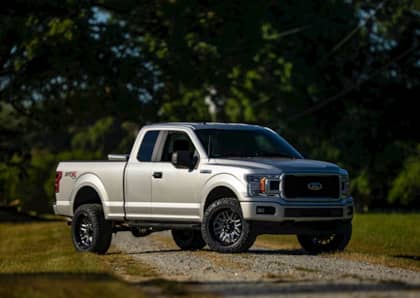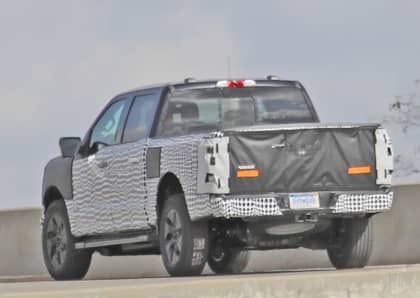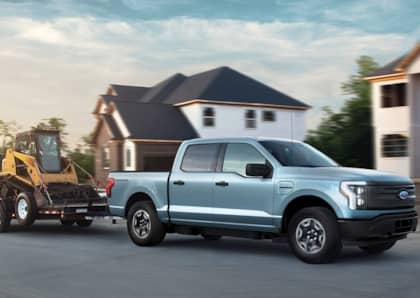Trail-ready Hybrid: This Ford F-150 Powerboost is a No-Compromise Overlanding Champion
It would seem that 2022 is poised to be the year for the EV truck takeover. With mainstream offerings from both Ford and GM announced, the idea of a battery-powered pickup is no longer regulated to boutique brands and mysterious start-ups.

With Rivian’s R1T already in the hands of consumers and the automotive press, the advantages of an ICE-less pickup are apparent, and very well may be worthy of the hype.

The jump from traditional pickup to EV is a big one, however. Passenger car drivers have had decades to ease into the idea of a plug-in existence, with hybrids, PHEV offerings, and low-cost lease EVs. Furthermore, the experience of commuting in a traditional gas-powered car and an EV car is hardly wrought with compromise. As long as distance isn’t a major concern, EVs make all the sense in the world for many consumers.

Outside of a few scattered offerings, there haven’t been many hybrid pickups (though that is changing). Ford just released their Powerboost offering in 2021 with the introduction of the 14th generation of the light-duty truck. Sandwiching an electric motor between the turbocharged 3.5L V6 and 10 speed transmission, the Powerboost picks up a net gain of 47 hp and 70 lb⋅ft of torque.

Unconventional Power in a Familiar Package
Coming from an AWD Honda Ridgeline, owner Nate Mayo was down for an unconventional choice, but knew that he needed a platform that could handle the toughest trails that the American south could offer. The 4WD F150 is obviously no stranger to off-road based customization, and the hybrid option intrigued him, especially at a relatively low $2500 increase over the base price.

Interestingly, Nate had to order this one because the dealer said they’d never get a base-model with the Powerboost engine. He wanted vinyl floors, a bench seat for his kids, and as little electronics on the seats as possible.

When Nate set out to modify the Powerboost, he planned for light/moderate off-road adventuring, camping, and general family adventuring. “I wanted to be able to go anywhere and not have to worry about clearance or not being prepared.” Thinking back to his time in the Ridgeline, he had hit the limits several times in the soft-roader, and knew he didn’t want that to happen again.

A Familiar Recipe
In regards to off-road performance, Nate set out to fit 35” tires to the FX4, and began preparing the truck for the upsize. He settled on a BDS Lift with Fox 2.0 Coilovers for a 4” lift. A set of 18x9 Fuel Couplers settles well into the wheel wells, covered in 35x12.5 Nitto Ridge Grappler hybrid terrain tires. As often as Nate is off-road, he also uses the truck for commuting so a tire that was capable of respectable on and off-road performance was important.

One concession that the Powerboost makes is a lack of available underbody protection. The frame cross-member is about 10” further back than it is on all other trims and engines, making it difficult to find underbody protection that will work without serious modification. That’s not to say that the aftermarket won’t ever find a fix, but at this point, there aren’t a lot of solutions.

No Problem Off-Grid
Up top, however, the Powerboost is as blank a slate as any other F150. Nate’s overlanding setup is primarily built around the RCI Off-road 12” bedrack and Decked In-Bed storage system. Between the two, Nate has plenty of room for both sleeping and storage for off-road adventuring.

The real advantage to the Powerboost powertrain, and Nate’s favorite part of the truck, is Ford’s Pro Power Onboard system. While normal gas-powered truck’s can be optioned with the feature, the engine has to be running for operation. With the Powerboost, the truck’s battery supplies power until it’s depleted, then the gasoline engine kicks on to top off the battery.

He recalls, “On top of a mountain in Tellico, 25° outside, and we’re sweating in the tent thanks to an electric blanket plugged into the ProPower Onboard outlets. In Generator Mode, the power plugs run off of the large hybrid battery, then when the power gets low, it runs the truck for about 3 minutes to charge the battery, then shuts the engine off again, without any input from me.”

Hybrid vs EV
Whereas EV truck manufacturers have marketed these same features, the option for them to use with a traditional hybrid is a game-changer for more technologically-conservative truck owners. Furthermore, accessibility is a big factor to consider. Looking at what will be available, EV trucks are going to be seriously expensive.

Ford and Chevrolet have both offered “base model” options, but time will tell how available those will be, or if they’ll even be available to non-fleet customers. The Powerboost, however, is available today with vinyl floors and a bench seat for well under $50,000.

Looking forward, the Powerboost may not reinvent the segment. It isn’t a revolution, and as the EVs come, it’ll likely be dropped and remembered as an interesting diversion in the F150’s long history. But in this current time, at the intersection of an increased interest in off-road adventuring and a transition between traditional powertrains to alternative fuel sources, the F150 Powerboost makes perfect sense.

Toyota has equipped the new Toyota Tundra TRD Pro with a similar hybrid powertrain, so the idea does have merit in the industry. Increased power, increased efficiency, silent off-roading are all icing on the cake to the already well-equipped F150, and for Nate, it means more fun and more time on the trails with his family. That’s certainly enough to convince us.

More From Driving Line
- Could hybrids catch on off-road? Toyota seems the new 2023 Sequoia is another good choice to take on the trail.











